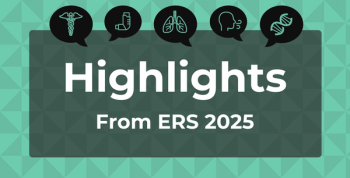
Patients, Pain, and Access to Opioids
Is limiting or discontinuing opioid use in clinical care the answer to addressing the opioid epidemic?
If you take to heart current arguments about the best options to reduce opioid-related deaths and substance use disorders, one might conclude that the magic bullet is limiting, or even discontinuing, prescription opioid use in clinical care.
If only it were that easy.
In its zeal to stop the opioid-fueled drug epidemic from claiming more lives, the medical community—along with several state governments—have taken strident measures to reduce the flow of prescription opioids in clinical practice. In August, the
Oregon, Michigan, Florida, and Tennessee, among other states, have passed laws restricting physicians' ability to
The instinct to reduce access to a potentially dangerous substance is appropriate and commendable. I have no doubt that these measures will, over time, help reduce deaths and the prevalence of substance use disorders related to prescription opioids.
But as a pain management specialist, I also see the other side of this issue, which is the clinical problem of relieving pain when deprived of access to a potent form of treatment.
An estimated 25 million Americans live with daily chronic pain, according to the National Institutes of Health.1 Even when patients are treated for pain in the most comprehensive, systematic, and collaborative manner—including alternative cognitive and behavioral therapies—relief is often elusive. For many patients, opioids are not just an option, they are the only meaningful source of solace. This can be true even after all other pain-relieving measures have been applied.
The CDC recognized this concern when it
The CDC guidelines also recognized laboratory screening as an important tool when treating patients for pain; they recommend urine laboratory screening before starting opioid therapy and then annually to assess for prescribed medications as well as other controlled prescriptions and illicit drugs.
Importantly, the CDC notes that, “Many Americans suffer from chronic pain. These patients deserve safe and effective pain management.” In fact, limiting access to opioids may unintentionally drive individuals with chronic pain to seek illicit and dangerous substitutes.
New
While many of these deaths involve people with entrenched substance use disorders, we can’t rule out the possibility that others involve people simply seeking relief after the medical community has failed them. I often see real patients with valid pain syndromes that admit to borrowing or buying opioids from diverted sources.
Quest Diagnostic’s experience aligns with these findings. According to
Pain is one of the greatest healthcare challenges, and like many other areas of medicine it has no known cure. Fortunately, there are novel analgesics on the horizon with less or no abuse potential or associated respiratory depression. But until those medicines are available, healthcare providers must use all of the tools available, including opioids, to help alleviate pain. Tools such as drug monitoring can help reduce risks related to opioid misuse and substance use disorders. Let’s keep in mind that the suffering of our patients is real, and risks can be managed so that meaningful pain relief is within sight.
Reference
- NIH analysis shows Americans are in pain [press release]. Bethesda, Maryland: National Institutes of Health; August 11, 2015. nih.gov/news-events/news-releases/nih-analysis-shows-americans-are-pain. Accessed August 22, 2018.
Newsletter
Stay ahead of policy, cost, and value—subscribe to AJMC for expert insights at the intersection of clinical care and health economics.













































